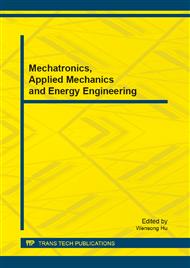p.274
p.278
p.284
p.289
p.296
p.304
p.309
p.314
p.323
On the Spending Structure and Potential of Living Energy: Evidence from a Chinese Rural Village
Abstract:
West China is a typical model of less developed economy, where peasantries depend on fuel woods and straws as one of major living energy resources but energy utilization whereof is low-efficient, triggering a severe squandering. Particularly, at its loess hill areas, a scarcity of living energy resources has relentlessly gripped ecological environment improvement. The study is conducted to estimate the potential and real consumptions in connection with living energy resources for a rural community and further investigating the structure thereof. The results register that an annual average of energy use is 489.5 kgs in standard coal per capita and 2.1 tons in standard coal per 4.2 population household. The study also finds that self-sufficient sources of energy account for 55.0% and developing the use of commercial energy plays a positive role in the transforming of energy composition but adds to economic expenditures on each farming family. A startling discovery is that half of living energy arises from biomass, with coal being in a substantial share, having a negative effect on local ecology. Moreover, those energy resources for cooking and heating purposes, maintaining the basic demand of survival, are highly proportional. Thus, the sampling village is both at a low level in energy utilization and of unsound in its structure. Furthermore, the study finds an alarming waste of power resources, relative to their huge potentials. The study suggests that the village should develop noveltyped energy resources and promote the transformation of its mix for preserving local ecology and building it into a well-being community. Particularly, from the systematology, the study recommends a typical energy engineering of methane production, termed the four-dimension-inone-geometry model, to rural households. These strategies can be applicable to energy engineering construction for other rustic regions.
Info:
Periodical:
Pages:
296-303
Citation:
Online since:
September 2013
Authors:
Price:
Сopyright:
© 2013 Trans Tech Publications Ltd. All Rights Reserved
Share:
Citation:


